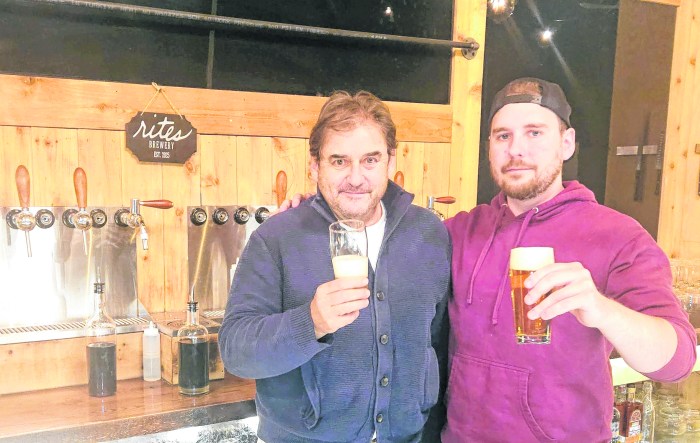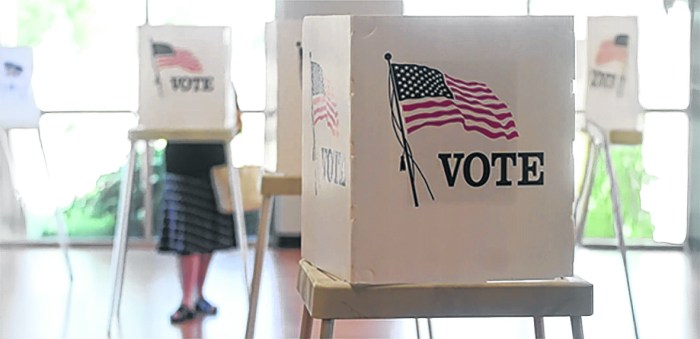
With the launch of restaurants like The Guac Shop and Go Greek on Seventh Street, this area of Garden City has become more metropolitan yet, many worry, less safe. Trustee Robert Bolebruch said the resulting increase in foot traffic by these new businesses may be dangerous in combination with the prevalence of drivers making illegal U-turns on the street.
“Online and on Facebook, some comments from people ticketed for making illegal U-turns on Seventh Street indicated that they did not even see posted signage about that while driving,” Bolebruch said. “There are only a couple, maybe four signs there, and I was thinking about increasing signage about U-turns further down on stretches of Seventh [Street] so people would see them.”
The corners of Seventh Street and Franklin Avenue, where popular restaurants Leo’s and The French Workshop are located, are of particular concern to the board.
“If anybody’s out there in the spring and the summer, those places are packed and they can’t be more than about six feet from Franklin Avenue,” Bolebruch said. “If a car lost control on that corner, it would take [out] 15 to 20 people on either side of Seventh Street. We have to do something as a village to make it a safer environment.”
To address the vulnerability of the Seventh Street/Franklin Avenue corners before dangerous consequences can occur, Bolebruch asked Superintendent of Public Works Joseph DiFrancisco to provide recommendations on safety measures that can be enacted at both corners. At a Garden City Village Board of Trustees meeting on Feb. 6, DiFrancisco outlined the proposed safety measures and how they were devised.
DiFrancisco, who is also the deputy village administrator, began by describing the committee behind the possible safety measures and explaining their methods for formulating them.
“We compiled an informal committee, which includes the Garden City Police Department, the Village Engineering Department, the Street Department and other areas and members of the Department of Public Works to study what was there, what the layout of the street looks like currently and determine where our vulnerabilities are and obviously propose solutions,” DiFrancisco said.
A major aspect of these proposed solutions is the installment of bollards—short, sturdy vertical posts—in areas that currently lack the protection of trees and other fixtures, such as traffic signal poles. DiFrancisco said that the bollards currently in use are black, steel-sleeved, filled with concrete and very stable.
“Currently, the ones we use now, they’re about three feet high and they go down about four feet. Some of the studies we have show that bollards of that size will stop a 4,500-pound vehicle going 30 miles per hour,” DiFrancisco said.
DiFrancisco proposed installing six bollards at the corner of Seventh Street and Franklin Avenue by Leo’s and showed a rendering of the exact spots where the bollards would potentially be.
“There’s a lot of utility lines under there, so the actual placement of the bollards could vary slightly from where these areas are once we find out exactly where the utility lines are,” DiFrancisco said. “But these placements of the bollards in these areas in combination with the trees and some of the poles that are already there should provide enough protection for this corner for any type of vehicle either losing control or hitting the curb.”
At the corner of Seventh Street and Franklin Avenue by The French Workshop, DiFrancisco proposed that five bollards be installed, as well as a bench on the north side of the street. The new bench would mirror one that is currently on the opposite side of the street.
In addition to the Seventh Street/Franklin Avenue corners, DiFrancisco recommended adding a few bollards near the entrances to Seventh Street by Natural Market and from Hilton.
“The corners on Franklin [Avenue] are a concern and a priority. For the other areas along the block, it’s really just additional maintenance to what’s already there, additional bollards here or there to improve safety,” DiFrancisco said.
Making crosswalks more visible to drivers was another discussed safety objective. DiFrancisco highly recommended adding reflectors to the pavement and painting road markings to alert drivers as they approach the crosswalk, as both solutions can be executed quickly and easily. Installing stop signs at each crosswalk was another proposed solution, but DiFrancisco warned that this might negatively affect traffic.
DiFrancisco and his committee were also enthusiastic about potentially installing either pole-mounted or street-mounted flashing lights that can be activated by pedestrians, but this solution will require further research and planning. After the board discusses further, this solution may be undertaken.
“To quickly summarize, the committee’s recommendation was the bollards in the areas along Franklin and Seventh, and then the additional ones down further,” DiFrancisco said. “I will get back to the board on pricing and the difference in the costs between these two options for the crosswalk lighting.”






























